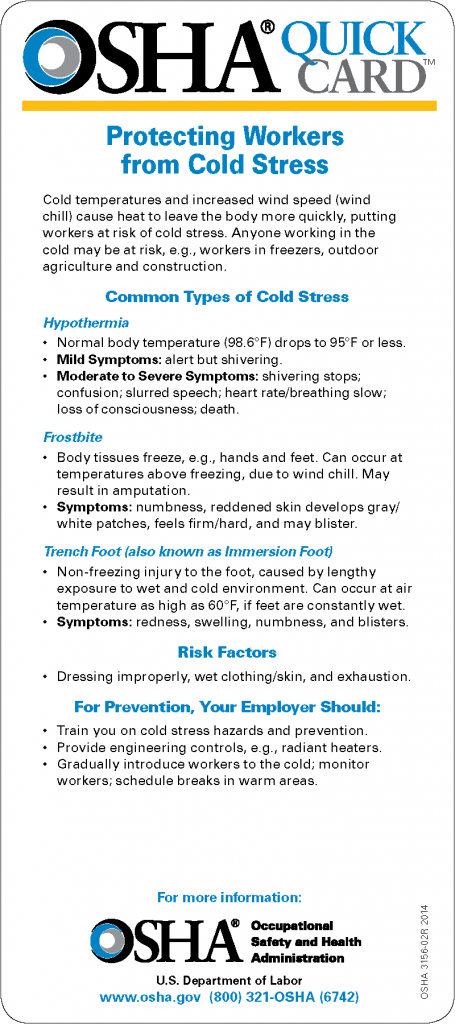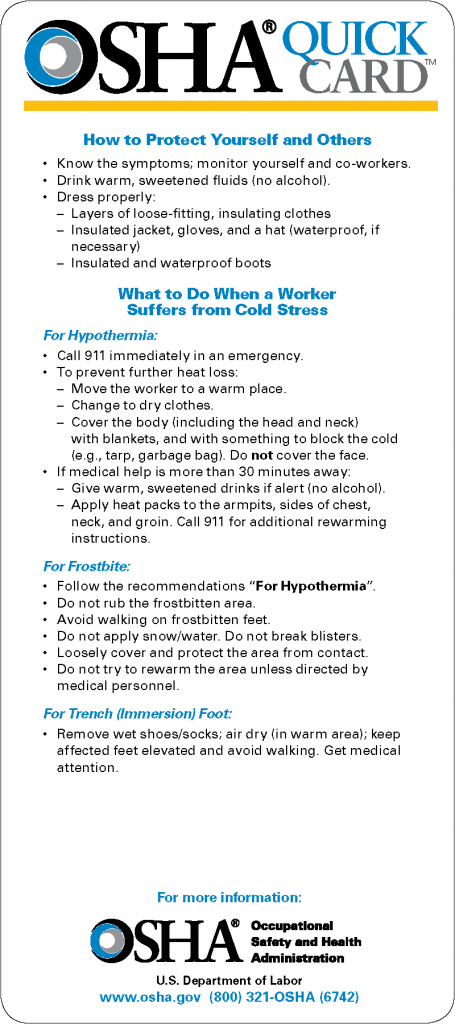
Workplace safety is an important concern for any organization, and while prevention is the ideal goal, accidents can and do happen. When a workplace injury occurs, conducting a thorough incident review is essential for multiple reasons. These reviews not only help to understand the circumstances surrounding the injury but also play a critical role in improving workplace safety and fostering a culture of continuous improvement.
Understanding Incident Reviews
An incident review is a deep dive into the circumstances surrounding an injury or accident in the workplace. This process typically involves analyzing data, and witness statements, looking at any contributing factors, and developing corrective actions to prevent similar incidents in the future.
Key Components:
1. Data Collection: Gathering all relevant information, including reports and witness statements.
2. Analysis: Identifying the root causes of the incident, such as unsafe conditions, lack of training, mechanical failure, or procedural failures.
3. Corrective action plans: Developing a plan to address identified issues and prevent future incidents. These ideas can come from the employee, the department and/or the safety committee.
4. Implementation: Putting the recommendations into action and monitoring their effectiveness.
Why Incident Reviews Matter
1. Identifying Root Causes
One of the primary goals of an incident review is to identify the root causes of the injury. Understanding whether the incident was due to human error, equipment failure, or environmental factors allows organizations to address specific issues rather than applying generic solutions. This targeted approach enhances the effectiveness of safety interventions. Many investigations stop short calling it an “accident”. This is only true in approximately 7% of workplace injuries. There is a root cause with corrective actions to the other 93%. You can find the root cause by asking “why” similar to a 2-year-old, until you come to a conclusion.
2. Improving Safety Protocols
Incident reviews provide a valuable opportunity to evaluate existing safety protocols. By analyzing what went wrong, organizations can refine their policies and procedures to mitigate risks. This might involve updating training programs, retraining employees, enhancing safety equipment, or redesigning workspaces to eliminate hazards. Your organization may also decide this job task is not something best suited for your employees and is more safely done with an outside contractor/professional.
3. Enhancing Employee Awareness and Training
Engaging employees in the incident review process fosters a culture of safety. When workers see that their organization is committed to understanding and preventing injuries, they are more likely to take safety seriously. Additionally, reviews often highlight the need for further training, ensuring that employees are better equipped to recognize and manage hazards. When your employees have a say and feel involved in the process they come to own it.
4. Legal and Regulatory Compliance
Conducting incident reviews is not only a best practice but often a legal requirement. Many jurisdictions mandate that organizations investigate workplace injuries and report findings to regulatory bodies. Failing to conduct thorough reviews can result in legal repercussions and damage to the organization’s reputation.
5. Reducing Costs Associated with Workplace Injuries
Workplace injuries can be costly, not only in terms of medical expenses but also through lost productivity, increased insurance premiums, and potential legal fees. By addressing the root causes of incidents and implementing effective preventative measures, organizations can significantly reduce the likelihood of future injuries, leading to substantial cost savings.
6. Promoting a Safety Culture
A strong safety culture is crucial for the long-term success of any organization. Incident reviews demonstrate a commitment to employee well-being and open communication about safety issues. This transparency encourages employees to report unsafe conditions and participate actively in safety initiatives, further reinforcing a proactive safety culture.
IMWCA staff recently updated our Incident Review form. This form is now a fillable PDF or can be printed to be filled out manually. It is available here:
IMWCA Staff highly recommends these be filled out for any incident and even the “close calls” as they can be utilized in trending. They should be completed by the employee possibly in coordination with the department head or supervisor and then sent up through the department to the safety committee for their review and input as well.
Incident reviews are a vital component of workplace safety management. By thoroughly investigating injuries and accidents, organizations can identify root causes, improve safety protocols, enhance training, comply with regulations, reduce costs, and foster a culture of safety. In an ever-evolving workplace, prioritizing incident reviews not only protects employees but also contributes to a more resilient and responsible organization. By learning from incidents, workplaces can move closer to achieving the ultimate goal: a safe environment for all employees.

Upcoming Virtual Round Table
February 4
Return to Work Strategies
Join Our Workers’ Compensation
Virtual Round Tables
Gain valuable knowledge and real-world solutions for handling workers’ compensation issues in our quarterly virtual round tables. Each session kicks off at 9:30 a.m. with a 15-20 minute presentation, followed by an open discussion where you can ask questions and exchange ideas.
We encourage participants to submit questions when registering to make the discussion even more relevant. These round tables are also a perfect fit for your monthly safety meetings, providing valuable training for your team. All sessions will be recorded. Don’t miss this opportunity to stay informed and improve workplace safety!
Renewal Policy Information
The new experience modification factors for the 2025-26 renewals will be available soon for members and agents through our online portal at www.IMWCA.org. If you need assistance with your login contact Andrew Justice.
Do you have questions about the payroll renewal worksheets?
Join us on March 18 for a webinar on how to provide accurate payroll information to help ensure your estimated premium is as accurate as possible. Topics include payroll inclusions/exclusions, how to calculate overtime pay, and determining pay for statutory volunteers.
The payroll renewal worksheets will also be available for members to fill out and update via the portal on February 12.

Member Spotlight: Nashua
Nashua Area EMS Director Zenda Vikturek shared insights on how the City of Nashua successfully established an EMS service for their small community of 1,551 residents.
- When was the Nashua Area EMS established and how was the city able to successfully undertake this new program?
The city officially went into service on July 1, 2023; however, numerous steps had to be completed before going into service. We started working on the plans for starting our service in August 2022. The city was able to take on this new program because of the support from experts in the field and volunteers in the community. We were fortunate enough to have the knowledge and support of Jim and Doreen Cook who previously owned an ambulance service. Cindy Shoemaker who worked with Jim and Doreen in the private sector. We were lucky enough to be able to purchase the ambulance and equipment utilizing ARPA funds. Brandi Molitor who was an EMS Service Area contractor SME @ PRI helped with ensuring all the regulations were being followed throughout the process.
Why do you think the City of Nashua has been successful in establishing and providing an EMS Service?
Zenda stated that it takes the knowledge and experience of professionals in the field who are willing to donate their time for the betterment of the community and understand the value of the service they are providing. Zenda has decades of experience in the medical field and contributed countless hours to ensure everything was done correctly and the service was set up for success when the wheels started rolling stated John Ott City Clerk.
How many volunteers does your EMS Service have?
We have a Director, Crew Chief, and Assistant Crew Chief who are all EMTs. We also have 10 additional EMTs who serve on the Nashua Area EMS as well as several drivers, including the 35 members of the Nashua Fire Department who can all help with driving. We also have 3 people who only drive for the Nashua Area EMS.
How do you keep up with training?
We have bi-monthly training sessions and partner with the Nashua Fire Department in order to keep everyone up to date with training requirements. Two members of the EMS service provide a lot of the necessary training.
What words of wisdom do you have for others who are looking to start their own EMS Service?
The biggest thing is to ensure that you have a team of professionals who are dedicated, knowledgeable and persistent. There is a lot of time and patience involved in making sure everything is done in the correct sequence and that all of the inspections are completed, and that regulations are being followed throughout the process way before you can even think about responding to your first call. You absolutely need the support of a good crew, in our case volunteers; willing to donate their valuable time to a necessary cause.

A big thank you to Dan Widmer and Eric Van Lancker for your time and dedication on the IMWCA board. Your contributions have made a real difference, and we’re grateful for all you’ve done to support our mission.
IMWCA is currently reviewing board applications.
Winter Weather Reminders
Winter is here, and now is the time to brush up on your winter weather safety practices. IMWCA encourages employers to provide ice cleats to help prevent slips and falls during icy conditions. Learn about different options and grants available. Below you will also find some essential tips from OSHA to protect workers from cold stress.



Key Dates Calendar
Stay on top of upcoming deadlines and events in 2025, by subscribing to IMWCA’s Key Dates Calendar. The calendar includes OSHA reporting deadlines, renewal and audit timelines, and relevant training.





